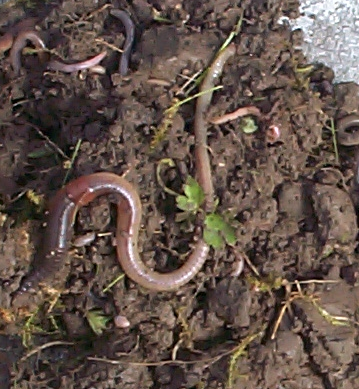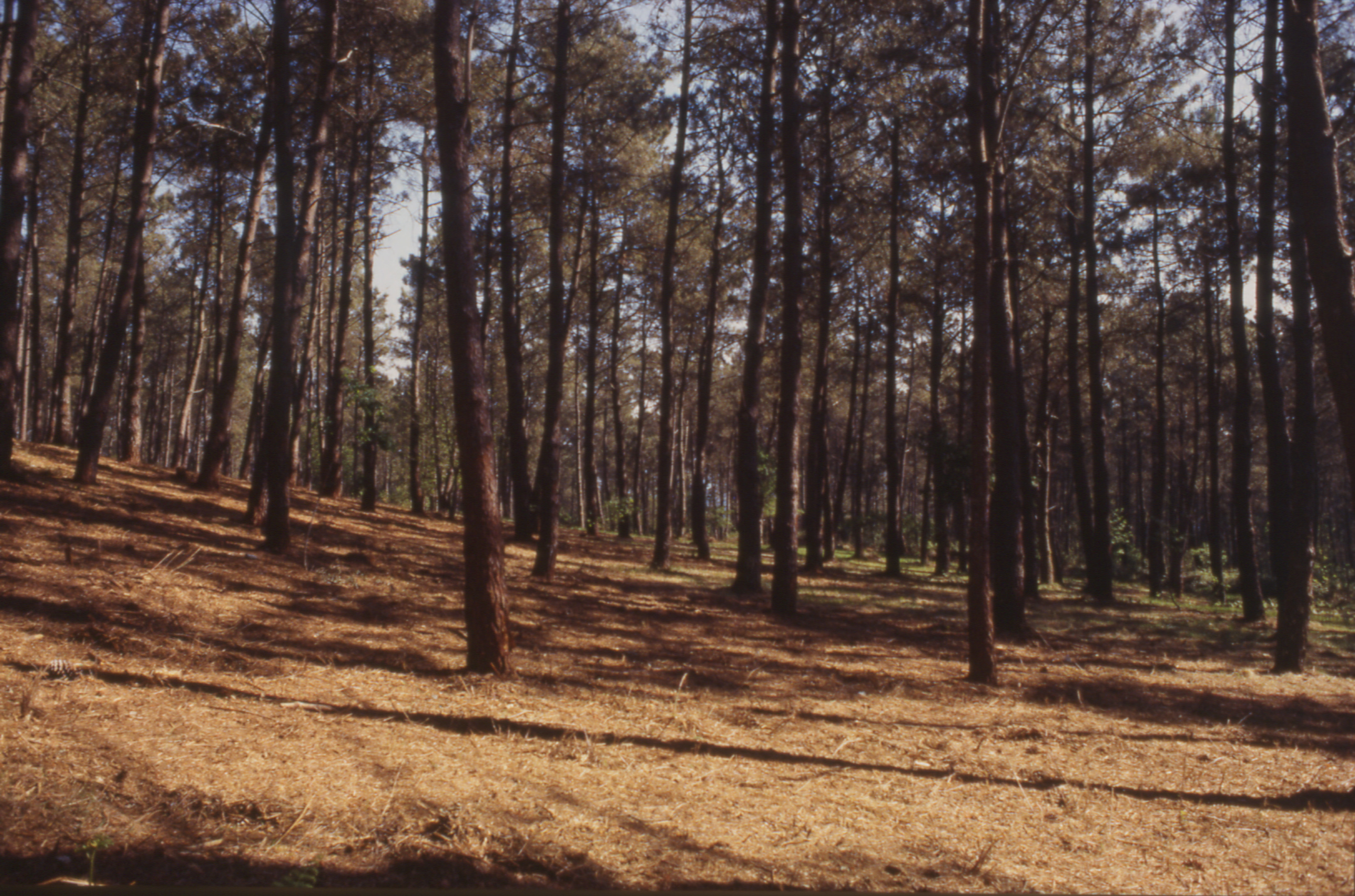|
|
| Earthworm
communities |
- Species
composition and biogeographical distribution
|
 |
Little information is
available about the earthworm fauna in the Iberial Peninsula and
new species remain to be discovered. A better knowledge of their
geographical distribution is necessary in order to get new insights
in the role they play in the terrestrial ecosystems.
The present distribution patterns of live organisms
are usually explained as the result of two factors. On one hand,
the influence of recent local factors, such as climate, altitude,
soil type, food availability and predators abundance, which are
also in interaction with inherent properties of the organisms (physiological
tolerances, habitat preferences, dispersal hability...). On the
other hand, large scale processes, fundamentally geological factors,
have conformed the distribution and abundance of plants and animals.
A more realistic view is obtained when both explanations are included. |
|
Trigo
D., Mascato R., Iglesias Briones M.J. & Díaz
Cosín D.J. (1990). Lombrices de tierra de Portugal continental.
Inventario y citas. Arquivos do Museu Bocage 1: 521-567.
Iglesias
Briones M.J., F. Mariño, Trigo D. &
Díaz Cosín D.J. (1991). Lombrices de tierra de Asturias,
León, Zamora y Salamanca. I. Géneros Allolobophora
y Dendrobaena. Boletín de la Real Sociedad Española
de Historia Natural 87: 151-173.
Iglesias
Briones M.J., F. Mariño, Trigo D. &
Díaz Cosín D.J. (1992). Lombrices de tierra de Asturias,
León, Zamora y Salamanca. I. Familias Megascolecidae, Acanthodrilidae
y Hormogastridae y otros Lumbricidae. Boletín de la Real
Sociedad Española de Historia Natural 88: 19-29.
Briones
M.J.I., Mascato R. & Mato S. (1994). Biogeographical
considerations in Asturias, León, Zamora and Salamanca (Spain)
in relation to their earthworm fauna. European Journal of Soil
Biology 30: 149-155.
Elvira
C., Domínguez J. & Briones M.J.I. (1996).
Composición de las comunidades de lombrices de tierra en
un vertedero, un estercolero y un depósito de pasta residual.
Nova Acta Científica Compostelana 6: 123-129.
Nair G.A., El-Mariami M.A., Briones M.J.I., Filogh A.M.& Youssef A.K. (2005). Earthworm resources of Benghazi, Libya. Journal of Environmental Biology 26: 175-178. |
| |
|
|
Díaz Cosín
D.J., Briones M.J.I.& Trigo D. (1989). Descripción
de una nueva especie de lombriz de tierra, Xana omodeoi
(Hormogastridae, Oligochaeta) y sus implicaciones en la división
de los Hormogastridae. Revue d’Écologie et de Biologie
du Sol 26: 225-231.
Souto B.F., F. Mariño, Briones
M.J.I. & Díaz Cosín D.J. Contribución
al conocimiento de los lumbrícidos (Oligochaeta) de la
Península Ibérica. IV. Prosellodrilus amplisetosus.
Nova Acta Científica Compostelana 2:79-82.
Briones M.J.I. & Díaz
Cosín D.J. (1993). Eophila cyanea n. sp. (Lumbricidae,
Oligochaeta), a new earthworm species from the Iberian Peninsula.
Graellsia 49: 73-76.
Briones M.J.I. (1996).
A taxonomic revision of the Allolobophora caliginosa
complex (Oligochaeta, Lumbricidae): a preliminary study. Canadian
Journal of Zoology 74: 240-244
|
| |
| Relationships
between earthworm species and environmental factors |
| |
|
In contrast to other multivariate ordination methods,
canonical correspondence analysis allows a one-step, direct relationship
between species and environment variables. This analysis identifies
those abiotic factors which are responsible for the distribution
patterns of the soil community.
In the example presented here DCA analysis was
applied to presence data of 13 earthworm taxa from Asturias, León,
Zamora and Salamanca (Spain) and to 20 soil factors. From the results
it can be inferred that the most prominent factors influencing earthworm
distribution in the studied sites are pH, cations such as calcium,
magnesium and aluminium and the silt content. |
Briones M.J.I.,
Mascato R. & Mato S. (1992). Relationships of earthworms with
environmental factors studied by means of detrended canonical correspondence
analysis. Acta OEcologica 13: 617-626.
Briones M.J.I. (1993).
Two ecotypes in Allolobophora caliginosa (Oligochaeta,
Lumbricidae). Acta OEcologica 14: 317-325.
Briones M.J.I., Mascato
R. & Mato S. (1995). Autecological study of some earthworms
species by means of ecological profiles. Pedobiologia
39: 97-106.
Moody S., Briones M.J.I.,
Piearce T.G. & Dighton J. (1995). Selective consumption of
decomposing wheat straw by earthworms. Soil Biology &
Biochemistry 27: 1209-1213.
Souto B.F., Briones M.J.I.
& Mascato R. (1995). A synecological study of earthworms in
Galicia (NW Iberian Peninsula): Canonical correspondence analysis.
Acta Zoologica Fennica 196: 262-264.
|
|
 |
Eisenia andrei and E. fetida are commonly employed
in estabilising organic materials. Although most earthworm scientists
now accept them as different species, they are often mistaken in
the literature.
One possible explanation is the lack of external morphological characters
to allow a better identification. Finding new characterising criteria,
such as differences in their life cycle (growth and reproduction
rates, mortality, cocoons and hatchlings size and their viability)
could help in their identification.
|
| Elvira
C., Domínguez J. & Briones M.J.I. (1996).
Growth and reproduction of Eisenia andrei and E. fetida
in different organic residues. Pedobiologia 40: 377-384.
Domínguez
J., Briones M.J.I. & Mato S. (1997). Effect
of the diet on growth and reproduction of Eisenia andrei
(Oligochaeta, Lumbricidae). Pedobiologia 41: 566-576.
Elvira
C., Sampedro L. & Briones M.J.I. (1998). Caracterización
de los capullos y de los recién nacidos de varias especies
de lombrices de tierra (Oligochaeta, Lumbricidae). Boletín
de la Real Sociedad Española de Historia Natural 94:
33-38.
|
|
| Allolobophora
caliginosa 2n |
| |
|
| Allolobophora
caliginosa 3n |
| |
|
| Sixto
M. (1999). Análisis cariológico del complejo "Allolobophora
caliginosa” (Oligochaeta, Lumbricidae). Master Thesis,
University of Vigo. Supervisors: Dr. J.J. Pasantes and M.J.I.
Briones.
|
|
 |
- Decomposition
processes of litter mixtures
The
management of litter mixtures provides important means of manipulating
soil organic matter development and nutrient release, yet has
received little research attention. However certain mixtures of
litters have shown to exhibit positive decomposition interactions,
resulting in enhancing nutrient release.
-
Deforestation
effects
Intensification of agricultural practices is leading
to an increased rate of deforestation.
This diminuition of tree cover together
with the removal of the felling residues has important effects
on the soil ecosystems (erosion, soil fertility losses, hydrological
changes, etc.) and on the soil fauna populations (namely, higher
mortality rates).
|
| Briones
M.J.I. & Ineson P. (1996). Decomposition of Eucalyptus
leaves in litter mixtures. Soil Biology & Biochemistry
28: 1381-1388.
Uhia E. & Briones M.J.I. (2002). Population
dynamics and vertical distribution of enchytraeids and tardigrades
in response to deforestation. Acta Oecologica 23: 349-359. |
|

